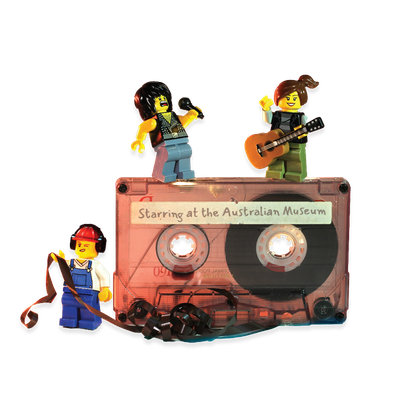Your search returned 12426 results
By Page Type
By Tag
- fish (966)
- blog (696)
- fishes of sydney harbour (401)
- First Nations (297)
- Blog (236)
- AMRI (169)
- archives (164)
- Eureka Prizes (145)
- Aboriginal and Torres Strait Islander (135)
- insect (126)
- Ichthyology (124)
- geoscience (109)
- minerals (102)
- climate change (99)
- podcast (94)
- Fish (91)
- Anthropology (89)
- International collections (80)
- Minerals Gallery (78)
- wildlife of sydney (78)
- Labridae (77)
- frog (73)
- gemstone (70)
- photography (65)
- history (63)
- Mollusca (60)
- gem (59)
- staff (59)
- Birds (56)
- Gems (56)
- Indonesia (56)
- education (55)
- shark (55)
- AMplify (54)
- people (53)
- earth sciences (50)
- past exhibitions (50)
- exhibition (49)
- Gobiidae (48)
- sustainability (46)
- Pomacentridae (45)
- Serranidae (44)
- lifelong learning (42)
- science (42)
- Earth and Environmental Science (41)
- Syngnathidae (41)
- Ancient Egypt (40)
- Bali (40)
- bird (40)
- dangerous australians (40)
-
Brahminy Kite
https://australian.museum/learn/animals/birds/brahminy-kite/Brahminy Kites have weak feet so, although they have long, sharp curved claws, they cannot take large prey. However they are expert at snatching prey in flight.
-
Bourke's Parrot
https://australian.museum/learn/animals/birds/bourkes-parrot/Another name for Bourke's Parrot is 'Night Parrot', as it will fly into watering places at night. However it is not to be confused with the real, and extremely rare, Night Parrot, Pezoporus occidentalis.
-
Black-necked Stork
https://australian.museum/learn/animals/birds/black-necked-stork/The Black-necked Stork is the only stork found in Australia.
-
Black-fronted Dotterel
https://australian.museum/learn/animals/birds/black-fronted-dotterel/The Black-fronted Dotterel is normally seen in small numbers, usually in pairs, sometime alone and rarely more than five.
-
Black-faced Monarch
https://australian.museum/learn/animals/birds/black-faced-monarch/Like other monarchs and flycatchers, the Black-faced Monarch has bristles around its bill to help it catch insects.
-
Black-faced Cuckoo-shrike
https://australian.museum/learn/animals/birds/black-faced-cuckoo-shrike/Cuckoo-shrikes are neither cuckoos nor shrikes, but are so called becaues their feathers have similar patterns to those of cuckoos and their beak shape resembles that of shrikes.
-
Black-breasted Buzzard
https://australian.museum/learn/animals/birds/black-breasted-buzzard/Black-breasted Buzzards use stones to open eggs by picking up and dropping a stone onto the egg until it breaks.
-
Black Honeyeater
https://australian.museum/learn/animals/birds/black-honeyeater/Black Honeyeaters, especially females, often eat charcoal and ash at old camp-fire remains.
-
Black Currawong
https://australian.museum/learn/animals/birds/black-currawong/The Black Currawong was widely eaten in the early days of European settlement in Tasmania and said to be quite tasty.
-
Black Bittern
https://australian.museum/learn/animals/birds/black-bittern/Black Bitterns are seen in daylight more often than other bitterns.
-
Discover more
2025 Australian Geographic Nature Photographer of the Year
Special exhibition
Free entry
Now open -
Discover more
Unfinished Business
Special exhibition
Free entry
Now open -
Discover more
Wansolmoana
Permanent exhibition
Free entry
Open daily -
Find out more
Burra
Permanent kids learning space
Free entry
10am - 4.30pm![]()
-
Discover more
Minerals
Permanent exhibition
Free entry
Open daily![]()




